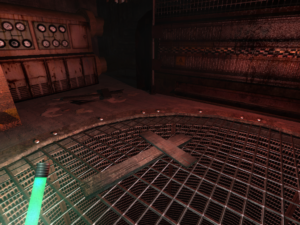Majesty 2: Monetary Policy
I first became aware of Majesty 2 through a series of posts on rockpapershotgun.com. Looking back at them again, one particular passage drew my attention:
The great irony/joy of [setting bounties] is that the only things heroes have to spend their money on is stuff you’ve got up for sale. Build a marketplace to flog potions, a blacksmith to sell armour and weapon upgrades and an inn to booze the night away in. Dimwits – all that gold they’ve earned, given straight back to its source. So, you eventually get a decent portion of your spending back…
…To then in turn spend on new heroes, buildings and upgrades. Nobody gets rich here – the money just cycles around and around. I’ll guess this tongue-in-cheek futility is deliberate…
Fools? Futility? Hardly! Money is not the same as wealth, as anyone in Zimbabwe can tell you. A man trapped on a desert island with a million dollars in a suitcase isn’t “rich” in any meaningful sense, because the lack of things to buy makes it worthless. 1The presence of a half-dozen additional castaways who still believe that the money has value may change this, of course. Likewise, a Hero who’s decked out in the best weapons and armor, with a backpack full of healing potions and charms, is better off than he was before he spent the time accumulating the cash that he spent on it — and the kingdom is better off for having him.
And ultimately, you’re controlling a kingdom here, not an individual. Individuals may value money as an end in itself, but from a national perspective, the whole purpose of money is to keep it running through the engines of commerce like water through a mill-race, generating useful work through its movement. If you can do this without increasing the money supply, that isn’t futility. That’s more like a miracle.
I don’t want to overstate the case here. It’s not like the game has inflation or a business cycle or anything. In sophistication of economic modeling, we’re somewhere above most RTS games, but below the likes of Sim City. The strangest part, when you stop to think about it, is that the peasants in your domain seem to just generate tax revenue out of thin air. These are people who spend most of their time toiling away at new buildings for you, but you never actually pay them. They pay you. It works as gameplay, though, because it gives you an incentive to protect them.
Come to think of it, there’s an interesting contrast there between Majesty and its evil twin, Dungeon Keeper. In DK, your minions are gold-sinks. You have to keep paying them periodically to keep them from leaving, and gold paid in wages just disappears, as if eaten. If I were a more suspicious man, I’d think that they were somehow sneaking it to the peasants in Majesty 2, explaining two mysteries at once. But no, I think it’s just illustrating the nature of good and evil. Good produces; evil consumes. This means that evil’s preferred strategy is the quick strike, achieving victory before the money runs out and then, presumably, leaving things behind in an unsustainable state. Good, on the other hand, wins by enduring. You’ll be unstoppable if you can last long enough. It’s almost as if they really are two different sides of the same game.
| ↑1 | The presence of a half-dozen additional castaways who still believe that the money has value may change this, of course. |
|---|
 Comments(0)
Comments(0)